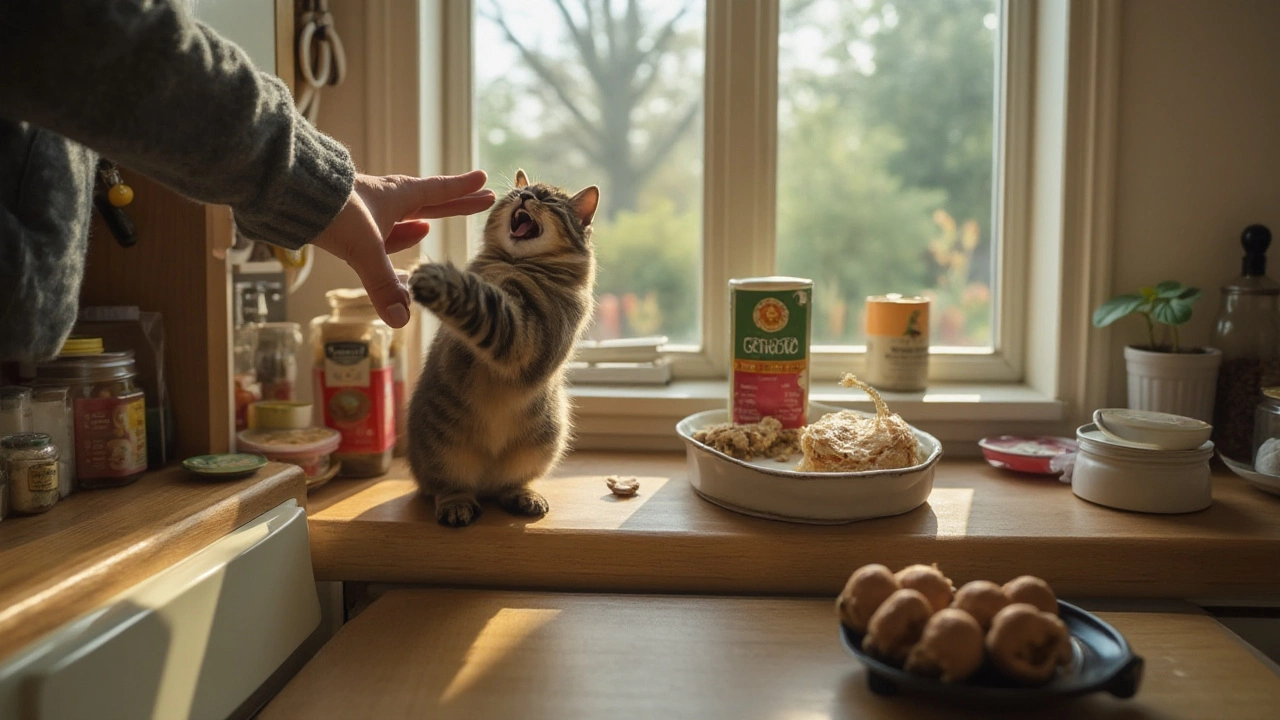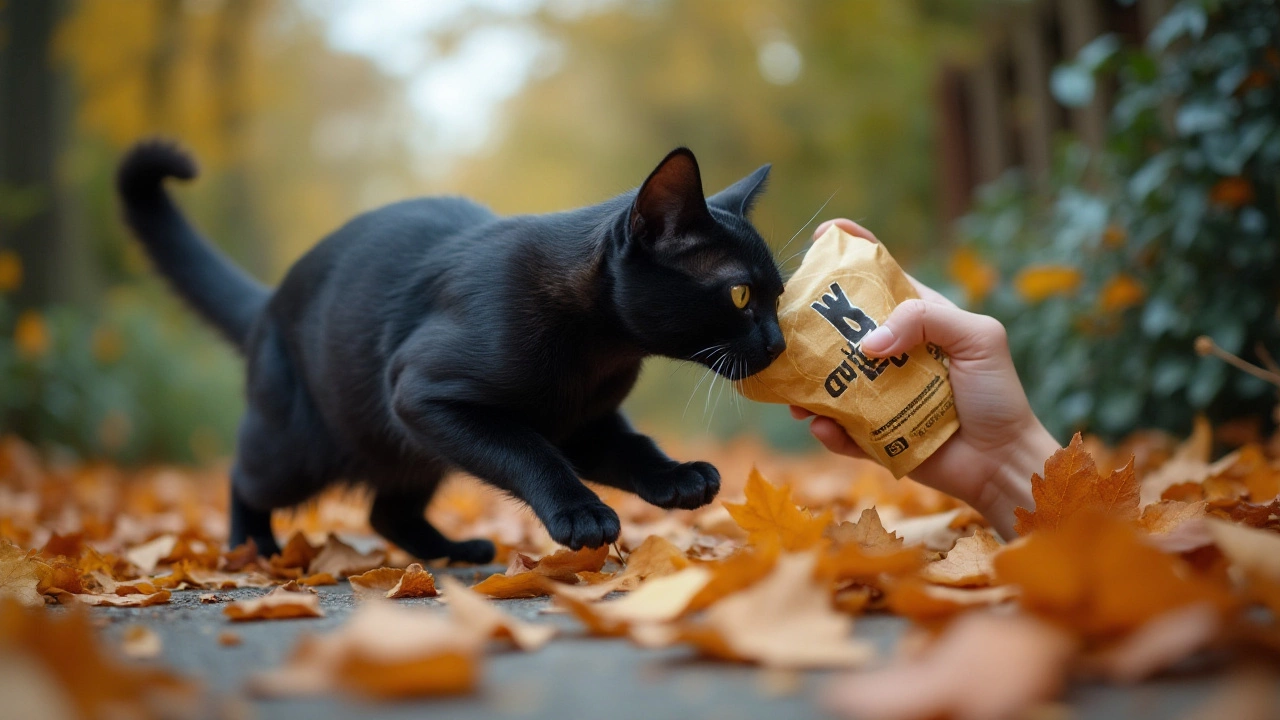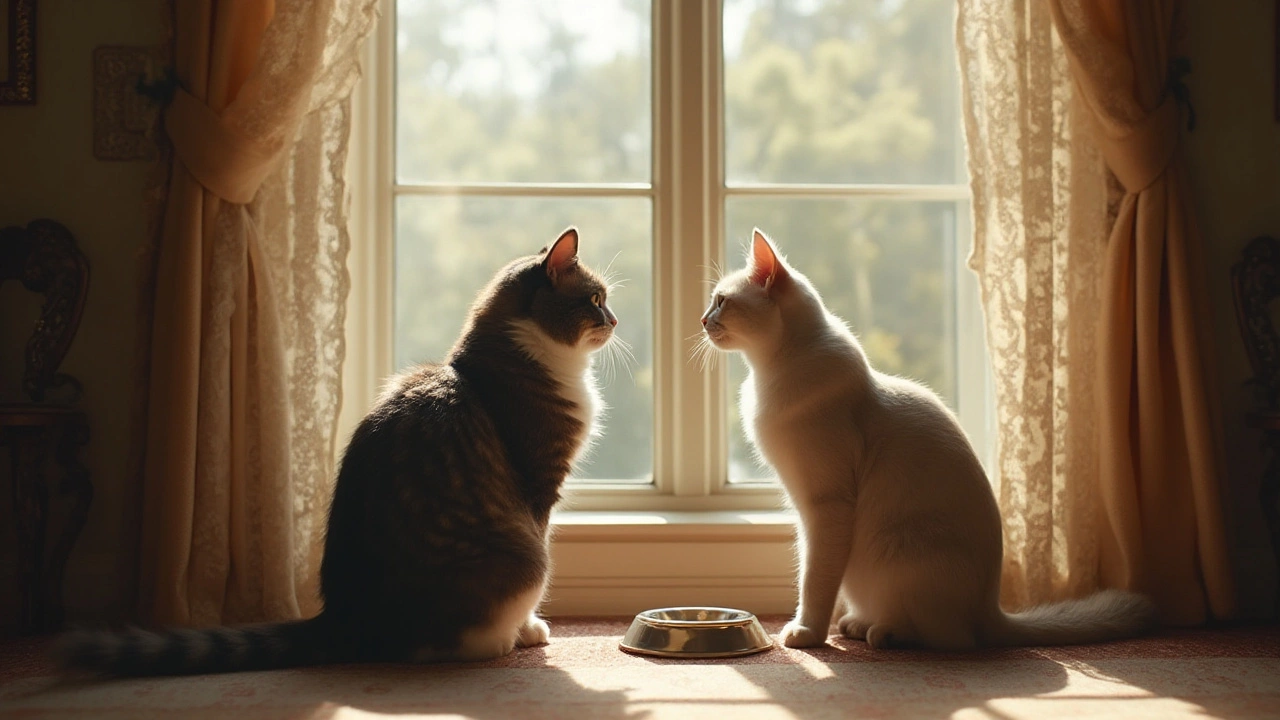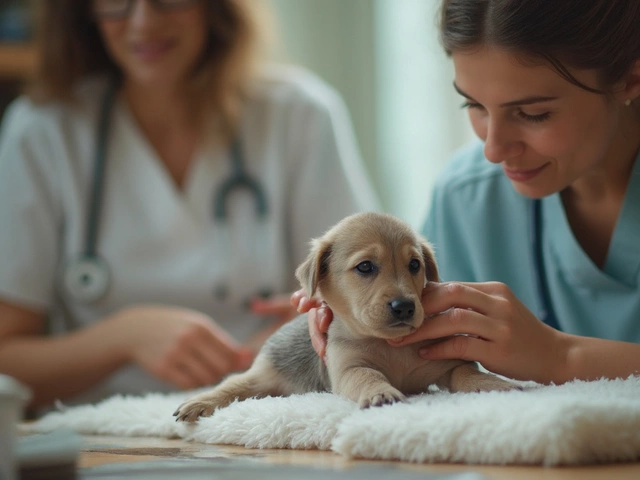For those who share their life with a feline companion, understanding when their cat is hungry can seem like a riddle wrapped in an enigma. Cats are often subtle communicators, and their behaviors can be mysterious. Yet, learning how to decipher these signals can lead to a healthier, more harmonious relationship with your pet.
From vocalizations and restlessness to a never-ending curiosity about your dinner plate, our purring pals have various ways to say they're ready for a meal. But sometimes, what seems like hunger might be something else entirely. Maybe they're bored, stressed, or just craving attention. Knowing the difference can ensure your cat is getting exactly what it needs.
We'll explore these cues and break down what they can indicate about your cat's state of mind. In addition, we'll guide you through the myriad of cat food options, helping you choose what's most nutritious and satisfying for your furry friend. After all, a well-fed cat is a happy cat, and a happy cat makes for a happy home.
- Understanding Feline Behavior
- Cues Your Cat is Hungry
- Distinguishing Hunger from Other Needs
- Choosing the Right Cat Food
- The Role of Nutrition in Cat Health
Understanding Feline Behavior
Grasping the intricacies of feline behavior requires a deeper dive into the psyche of our beloved cats. Cats have been companions to humans for thousands of years, yet they retain many elements of their wild ancestry. This independence and natural instinct can often make them seem enigmatic to us. While dogs have been bred to work alongside humans, cats traditionally evolved as solitary hunters, shaping their unique personality traits. Cats communicate through a mixture of vocalizations, body language, and behaviors. Recognizing these signals is the first step in understanding whether your cat is hungry or just seeking attention or play.
One primary way cats express themselves is through vocalizations. A cat's meow is particularly intended for human interaction. Kittens mew at their mothers, but in the wild, adult cats are not prone to making such noises towards each other. If your cat is persistently meowing, it might be trying to tell you something important. Dr. John Bradshaw, an expert in cat behavior and author of 'Cat Sense', notes that the intensity and frequency of the meow can vary greatly between different cat breeds and individual cats. A Siamese, for instance, is famously talkative, while a Russian Blue might prefer quieter interactions.
Beyond meows, you should also pay attention to your cat's body language. Tail flicking, ear positioning, and eye dilation can offer valuable clues into their mood and needs. A cat with its tail held high often feels confident and content, while a swishing tail might indicate irritation or excitement over impending mealtime. Similarly, watch your cat's ears. Forward-facing ears suggest curiosity or companionship, while flattened ears might suggest a defensive or aggressive stance. Understanding these nuanced behaviors can be key in discerning whether they're displaying signs of hunger or merely reacting to environmental stimuli.
Let's also consider the behavioral patterns surrounding feeding time. Cats are creatures of habit and thrive on routine. It's quite typical for them to associate certain times of day with feeding. If your cat paces or sits by its feeding area or becomes vocal around those times, it might be their way of reminding you about mealtime. A healthy feeding routine not only influences their physical health but can also manage behavioral expectations and reduce anxiety or aggression around food.
To further illustrate these points, consider this fascinating statistic: a study from the Waltham Centre for Pet Nutrition found that cats recognize their owner's voice, but choose to ignore it. This selective attention highlights the importance of non-verbal communication cues that cats rely on more heavily. In connecting with your feline friend, remember the significance of patience and observation. Learn to observe, interpret, and respond to your cat’s unique signals, especially those concerning hunger, enriching the relationship between cat and owner. In doing so, you'll not only meet your cat's nutritional needs effectively but also foster an environment filled with trust and mutual understanding.
Cues Your Cat is Hungry
Cats, with their suave and elusive ways, have a unique style of conveying hunger that can sometimes leave even the most attentive pet owners puzzled. Unlike dogs, who might bark or jump around, cats often employ more subtle cues to indicate their appetite. One of the most common signs is increased vocalization. Your feline might employ persistent meowing or a particular cry that becomes familiar over time. This vocalization might start softly and then steadily increase in volume and urgency if left unanswered. Understanding these cues can be crucial in decoding your cat's language and ensuring it is fed appropriately, thereby maintaining its mood and health.
In addition to their vocal calls, hungry cats often exhibit increased activity around their feeding areas. You might notice the cat weaving around your legs, especially when you're in the kitchen, or they'll lead you to their feeding dish. Sometimes, your feline friend might even nudge or paw at the food bowl, an unmistakable action that signals their desire for a meal. The cat might exhibit a sense of restlessness, wandering around or getting into places they usually avoid, almost like they're embarking on a quest to find sustenance.
Some cats employ the subtle art of the stare, fixed and almost meditative, as they look up at you with wide eyes that seem to say, "It's time for my meal now." This gaze is often accompanied by a slight twitch of their ears or tail—a truly feline mannerism that is often hard for pet owners not to respond to. Besides these kinetic suggestions, cats sometimes engage in anticipatory behavior, like increasing their grooming activities right before what they know is their feeding time. Regularly scheduled meals help reinforce such routines and make it easier for pet owners to recognize deviations that suggest hunger.
Interestingly, a study published in the Journal of Veterinary Behavior found that cats develop these hunger indicators over time based on their interactions and responses from their caregivers. This reinforces the idea that communication is a two-way street—even with a pet. An underlying factor that helps make these signals more noticeable is the regularity of a cat's diet. Cats often thrive on routine, and when this changes, it's not unusual for behavioral adjustments—like those indicating hunger—to emerge.
If you're still in doubt, noting your cat's body language can also help. For instance, the eager pacing or darting movements, often towards where they expect food, can be more pronounced. Some cats are known to target their gaze directly at the cupboard or shelf where their food is stored, displaying remarkable intelligence and recall. Observing these tendencies can clue you into your cat's natural feeding rhythms and help you meet their nutritional needs effectively.
The renowned animal behaviorist Dr. John Bradshaw once remarked, "Understanding a cat's signals is as much about recognizing habits as it is about interpreting actions. Their world is built on subtlety." This reminder underscores the importance of being watchful and sensitive to the everyday behaviors of our feline friends to better accommodate their dietary needs.

Distinguishing Hunger from Other Needs
When interacting with our cat on a daily basis, it's essential to grasp the subtle nuances of their behavior. At first glance, a meowing cat or a kitty engaging in playtime may seem simply hungry, especially if dinner time is near. However, cats can have a variety of needs and desires, and hunger is only one part of the puzzle. Recognizing non-hunger related signals can improve not only your feline's well-being but also your connection with them. For instance, cats often meow to communicate different things and not always because they want food. The tone and persistence of a meow can offer clues: a low, insistent meow may indicate a need for affection, while a high-pitched, repetitive one might suggest boredom or stress. Paying attention to these vocal cues is crucial, as cats use meowing as one of their primary ways of linking with us.
Besides vocalizations, body language can tell us a lot about a cat's state. A cat that's rubbing against your legs may seem like it's seeking food but could instead be marking you with its scent, a way to show affection and claim you as part of its domain. Additionally, a cat that's playfully pouncing around is likely looking for more playtime rather than dinner. Similarly, excessive grooming could point towards anxiety or health issues rather than an empty stomach. Howard Brunner, a renowned animal behavior expert, once said,
"Understanding a cat's body language is akin to learning a new language; every flick of the tail and shift of a paw can mean different things."This highlights the need for sensitivity to the multifaceted signals our pets offer us.
Importantly, consider the environment and lifestyle of your pet. A cat that lives indoors might direct its energy towards food more often than its outdoor counterparts due to limited play opportunities. Ensuring ample stimulation in the form of toys and interaction can balance out this tendency. Meanwhile, the demanding cat that seems to want constant food may be suffering from medical conditions like hyperthyroidism or diabetes, suggesting a prompt visit to the vet is needed if excessive eating habits persist despite ample feeding. Recognizing these symptoms is vital. Monitoring their weight and eating habits over time can help discern whether your feline's hunger is normal or indicative of a potential health problem, thus avoiding misinterpretations.
Choosing the Right Cat Food
Feeding your cat isn't just about pouring kibble into a bowl; it's making a conscious choice that influences their health, mood, and longevity. Given the plethora of options available, it might feel like walking through a labyrinth. However, understanding some key aspects of cat nutrition can unravel many of these complexities.
Cats are obligate carnivores, which means their diet primarily consists of meat. Thus, when selecting the right cat food, it's crucial to ensure that meat forms the main ingredient. Check the labels on the products you consider. Protein should be a major component, with sources like chicken, turkey, or fish leading the list of ingredients. Cats also derive some essential nutrients such as taurine and arachidonic acid from animal-based ingredients, which are pivotal for their visual health and metabolism.
While protein is king, a healthy portion of fats is just as critical. Fats in cat food provide essential fatty acids and help keep their coat shiny and skin healthy. However, balance is important. Excessive fat may lead to obesity, a common issue among indoor cats. Look for foods with a balanced ratio of proteins and fats, and keep an eye on your cat’s weight as you adjust their diet accordingly.
"Feeding animals is not just about nurturing them physically but nurturing them emotionally too," said the nutritionist Ellen Katz, in her talk on pet feeding strategies.
Dry and wet foods each have their place, and often a combination serves your cat best. Dry food typically contributes to dental health as it can reduce plaque and tartar build-up. On the other hand, wet food offers higher moisture content, which is beneficial for hydration, crucial for cats that might not drink very often on their own.
- Assess the specific needs of your cat. A kitten will have different dietary requirements than a senior cat.
- Consider any health concerns. A pet with a sensitive stomach may do better on a limited-ingredient diet.
- Look out for added minerals and vitamins. These play a significant role in ensuring a balanced diet.
The importance of selecting the right cat food cannot be overstated. It plays a foundational role in preventing a slew of potential health issues, from urinary tract diseases to diabetes. By understanding your cat's dietary needs and choosing accordingly, you form the cornerstone of a happier, healthier life for your feline friend. It's an investment in their future that pays dividends in purrs and companionship.
| Nutrient | Recommended Amount |
|---|---|
| Protein | 30-40% |
| Fat | 10-20% |

The Role of Nutrition in Cat Health
Cats are obligate carnivores, which means that their dietary needs are distinct from other pets. This unique requirement comes from their evolutionary past, where hunting prey provided all the nutrients they needed. As a result, a balanced diet is vital to ensuring your feline friend remains healthy and active. High-quality cat food typically contains a mix of proteins, fats, and a limited amount of carbohydrates. These components work together to support various bodily functions, maintaining muscle mass, skin health, and a shiny coat.
Protein, particularly from animal sources, is arguably the most critical component of a cat's diet. It is crucial for growth and development and helps to repair tissues. Essential amino acids like taurine, which cats cannot synthesize themselves, must be included in their diet. Without adequate taurine levels, your pet could face serious health issues, including heart disease and vision problems. Fats also play a significant role, providing energy and aiding in the absorption of fat-soluble vitamins. Omega fatty acids, plentiful in fish oils, contribute to healthy skin and a luxurious, soft coat.
Providing a diet that meets these requirements means not just satisfying their immediate hunger but also investing in their long-term health. It's important to understand that not all cat foods are created equal. Pet owners should meticulously check labels for essential nutrients that sustain a healthy cat diet. A study published in the Journal of Animal Science highlights that cats who consume a balanced diet enriched with necessary vitamins and minerals often demonstrate higher levels of activity and better overall health.
"A balanced diet isn't merely about satisfying hunger; it's the foundation for extending a pet's life and ensuring its quality," said Dr. Jane Doe, a distinguished veterinary nutritionist.
Vitamin deficiencies can lead to an array of health problems. For instance, a lack of vitamin A may result in skin issues and developmental delays, while vitamin D is crucial for bone health. Interestingly, cats also require a constant intake of B vitamins to support their high metabolism. Adding supplements to the diet should always be done under professional guidance. Table scraps or generic cat food lacking these crucial nutrients could leave gaps in their diet, and might not happily meet the demands of a cat's biological needs.
Complications arising from poor nutrition can lead to diabetes, obesity, or kidney disease, which are not uncommon in cats on a diet that includes excess carbohydrates. The link between proper nutrition and optimal cat health is undeniable. Even though choosing the right diet can seem daunting, it is manageable with the right information. Reading reviews and consulting with a veterinarian can help steer you toward foods that will cater to your pet’s specific health needs, ensuring your cat stays lively and healthy throughout its years.
The benefits of a balanced, nutritious diet extend beyond physical health. Cats who eat well-balanced meals also exhibit fewer behavioral problems, showing more affection and less aggression. This peaceful transformation is often attributed to diets that eliminate unpleasant hunger or discomfort caused by inappropriate food. Understanding these complex nutritional needs not only enriches the life of your pet but enhances the bond shared between you and your feline companion, making every moment together all the more rewarding.







